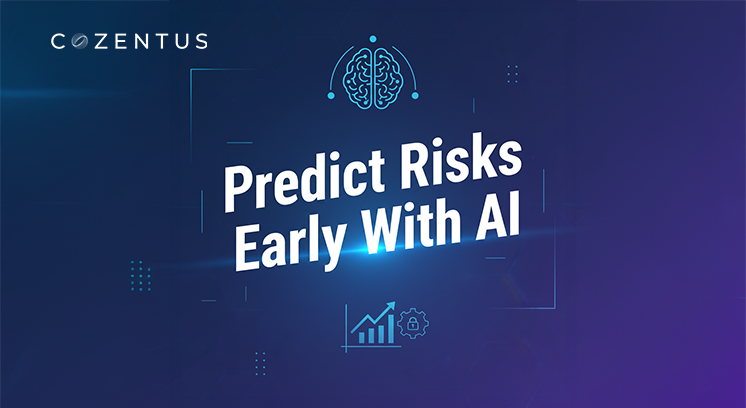Lack of visibility or synchronisation in supply chain management may lead to enormous financial consequences. Recent AI and machine learning breakthroughs allow us to leverage historical and real-time supply chain data to uncover patterns that show how factors impact network components.
These insights aid businesses in gaining a competitive advantage, streamlining operations, decreasing expenses and raising revenues, and using suggestions to improve customer experience. A study found that in 2023, supply chain operations will use transformative AI-related technologies like machine learning in at least half of all worldwide enterprises.
How does machine learning work?
Using a kind of artificial intelligence called machine learning, computers can learn to emulate human actions. It is an algorithm that enables the system to manage and learn without the aid of any particular software. These are used to carry out complicated jobs in a manner analogous to how people resolve problems.
With ML, distinct patterns in the data are studied and utilised to build creative solutions further. ML often uses information or perceptions to train a model.
What Role Does Machine Learning Play in the Supply Chain Sector?
Most well-known businesses today concentrate on the need for machine learning and what it can do to increase the effectiveness of their supply chains. Cost-effectiveness is achieved via effective waste reduction and quality improvement, enhancing product movement across the supply chain without requiring businesses to maintain extensive inventories. Streamlined supplier relationship management is possible using simpler, faster, and proven managerial techniques. Machine learning determines actionable insights, which consider quick critical thinking and ongoing progress.
Machine Learning Applications in the Supply Chain
Although machine learning is simple to comprehend, it aids numerous businesses in overcoming their operational difficulties. The supply chain is a data-driven sector with several ML applications. Machine learning can help the supply chain sector push its operations toward increased productivity with:
Real-time Monitoring
Cost Savings
Storage Management
Fraud Avoidance
1. Real-time Monitoring
Machine learning solutions that combine deeper analytics, IoT and real-time monitoring can be used to increase supply chain visibility. The historical data from many sources can also be analysed by ML models and processes, which can then identify a relationship between the operations along the business line. The most acceptable illustration of this is Amazon, which has been employing machine learning techniques to provide its consumers with remarkable customer service.
2. Cost Savings
Many businesses are using machine learning, and its usage is overgrowing. These ML approaches aid businesses in triggering automatic reactions and managing supply and demand mismatches, limiting costs. The supply chain's management and operational costs are further reduced by creating a network of logistics service providers and storage procedures.
3. Storage Management
Supply chain planning has to be efficient for the warehouse and inventory. With the most current supply and demand data, ML enables continuous improvement in an organisation's efforts to provide the desired customer service at a reduced cost. The predicting capabilities of the ML models can assist businesses in enhancing their warehouse management and addressing the overloading problem.
4. Fraud Avoidance
By automating inspection and auditing processes and performing real-time analysis of the results to discover deviations from standard models, machine learning algorithms are successful in raising item quality and reducing risk. Additionally, privileged credential misuse—one of the primary causes of breaches across the global supply chain—can be avoided using machine learning (ML) techniques.
The Supply Chain Management Face of Transition
The supply chain sector is using AI-based technologies extensively. The goals are to increase productivity, lessen the impact of the global labour shortage, and find safer ways to move commodities.
Logistics organisations use IoT devices to collect and evaluate cargo materials and monitor the mechanical condition of pricey vehicles and tool locations. Instead of only focusing on improving local functional performance, supply chain management in certain businesses has strongly emphasised dynamic optimisation of the organisation's global value.
Identifying the impact of predictive analytics based on supply chain data, for example, may provide advantages. Few gains from AI in supply networks are less evident than others. Meanwhile, few businesses claim a causal relationship between changes in revenue and the introduction of AI into supply chains.
7 Ways Machine Learning Changes Supply Chain Management
1. Inventory Control
For producers, maintaining the proper quantity of product availability in the inventory by anticipated market demand has always been a persistent concern. Manufacturers can use big data analytics to examine many sorts of data, such as historical sales demand, channel performance, product returns, POS data, promotional data, etc., to get insights into:
What amount of inventory should be kept on hand at all times to fulfil demand?
How to minimise out-of-stock conditions
Controlling the effects of product recalls
How to facilitate cross-selling and enhance the performance of slow-moving stocks.
Machine learning can constantly improve a company's attempts to solve the over or under-stocking issue when fed with the most recent supply and demand data.
2. Improving demand forecasting accuracy
Predicting future manufacturing needs is one of the most challenging parts of managing a supply chain. Existing methods include fundamental statistical analysis methods like moving averages and sophisticated simulation models. Machine learning is proven to be particularly efficient in accounting for variables over time that traditional approaches cannot measure or quantify. The example that follows demonstrates how various techniques are used to predict demand is one that Lennox is currently using.
3. Predictive and preventive upkeep
Some significant causes of supply chain disruptions are machine breakdowns and equipment malfunctions. Unanticipated and lengthy downtimes might cause out-of-stock issues and lost income.
Companies are switching from the reactive and ineffective break-fix service paradigm to proactive maintenance strategies, such as predictive and preventive maintenance, to avoid these scenarios.
Machine learning is used to evaluate data from bright parts and sensors to forecast when a machine or component will break and determine the ideal time for repairs and replacements.
By doing this, businesses can cut down on extra inventory, lessen the damage and expense of unplanned downtime, and ultimately increase customer happiness and brand loyalty.
Machine learning can also identify frequent causes of failure, prolong the life of existing assets, and take the required preventative measures.
4. Reducing freight costs
Supply chains must align, but if we can't anticipate lower prices across the logistics chain, this technology will not be as useful. It can accomplish this in several ways, some of which are pretty obvious: by analysing current supply chain operations to pinpoint wasteful areas, it is possible to address those wasteful processes and reduce costs; likewise, by identifying more efficient routes for freight to take, not just through the complexity of the global value chain but simply from one location to another, it is possible to reduce fuel costs and transit time.
The capacity to spot potential cost-saving opportunities and take appropriate action might boost a business's earnings and improve supply chain management. The consequences will be amplified for the global logistics stream as a whole. Ever-more-optimal pathways will be used to route a growing number of orders controlled by an increasing number of freight suppliers. The capacity to avert interruptions early in the process will also have substantial ripple effects since problems downstream in the supply chain may have considerable repercussions. It will result in more on-time delivery of both sourced raw materials and finished goods. Customers and companies will ultimately be happy as a consequence.
5. Visual pattern recognition
Machine learning is proven to be particularly successful in automating inbound quality assessment across logistics hubs, isolating product shipments with damage and wear. It uses algorithms that swiftly search out related patterns in numerous data sets. The Watson platform from IBM was able to identify damaged shipping containers and products, categorise them according to the timing of damage, and suggest the best course of action to restore the assets. Watson blends visual and system-based data for real-time tracking, reporting, and recommendation-making.
6. Planning the production
Machine learning can make the difficulties associated with creating production plans simpler. For instance, CPG and food and beverage producers use machine learning to analyse weather prediction data (temperature and sunlight) to estimate demand for specific product categories and schedule production and inventories.
7. More prompt client service
Due to its intelligent network, machine learning ultimately contributes to cheaper inventory and operational costs and faster customer response times. Every other phase is now more easily accessible than ever since it fits the logistics management process jigsaw flawlessly. In the following years, it will significantly reduce the expenses of logistics management. Machine learning is being widely used in Logistics Control Tower operations to provide fresh perspectives on enhancing supply chain management, teamwork, logistics, and warehouse management. The illustration below demonstrates how machine learning-acquired contextual information simplifies processes.
Supply chains have recently become difficult to manage, with increased physical flows reflecting the more complex product assortment. The pandemic-induced market volatility has enhanced the need for flexibility and agility. Organisations and shareholders are putting greater emphasis on supply chain resilience as the environmental impact of supply networks becomes more widely recognised.
Artificial intelligence (AI)-based supply chain solutions are anticipated to be a potent tool to help businesses overcome challenges. Artificial intelligence has changed the game in several industrial sectors thanks to its ability to analyse vast amounts of data, comprehend connections, provide operation visibility, and promote more intelligent decision-making.
Recent Post
Subscribe to our newsletter
Stay updated on latest trends and news in the supply chain and logistics industry








